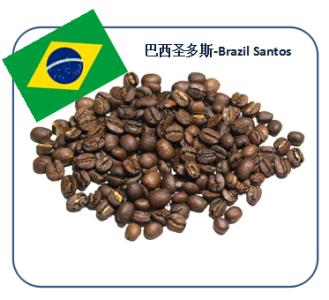The method of Grinding and Calibration of Iron pickup Coffee beans Flavor description introduction of varieties in manor area
The method of Grinding and Calibration of Iron pickup Coffee beans Flavor description introduction of varieties in manor area
In 1892, French Catholic missionaries left such a legend. He entered the Zhukula missionary, built a local church and introduced the habit of drinking coffee to the village of Zhukula. He personally planted a coffee forest and taught local villagers to grow, drink and sell coffee. From then on, the local villagers began to grow, grind and drink their own coffee, which continues to this day.
Li Fusheng, an 86-year-old villager from Zhu Kula village, said: "the coffee was planted by Father Tian for 117 years. I remember when there was a house high. There was a shed like this, and the roots were not as big as this."
Old man Li Fusheng is the first president of the village. The old man witnessed the history of coffee trees in Zhukula village. In 1948, President Li Fusheng launched the villagers to plant coffee on a large scale, which once grew to more than 80 mu, but a heavy snow in 1983 froze the coffee trees far away from the village to death. The 13 mu coffee trees around the village basically survived, with only 1134 left.
Ms. Huang Shuyun, a cultural scholar in Yunnan Province, said: "A Malaysian coffee expert once said that if you keep the old varieties of coffee in Yunnan, you will keep the status of Chinese coffee in the history of coffee in the world. Zhukula Coffee belongs to Yunnan small-grained Bobang Iron pickup Coffee, this kind of coffee is already very rare in Yunnan, so it is necessary for us to protect and develop it. "
"Yunnan Tiebika Typica Tibica / Tippika / Tippika Criolla Coffee Peas | Typica teacher Coffee Raw beans w.kaf.name"
In recent years, the local government is also fully aware of the importance of the protection and development of ancient coffee varieties in Yunnan, and regards coffee as a key industry for protection and development. The finance of Binchuan County allocates 100000 yuan of support funds every year to build the brand of "Zhu Kula century-old coffee". Yang Tiwu, director of the Economic Office of Pingchuan Town, is also resident in Zhukula Village to raise seedlings as a technician of seedling breeding of Zhukula Coffee. He said: "when we get to Zhukula Village, first, we should do a good job in the irrigation ditch (canal) of ancient coffee; second, we should control the diseases and insect pests of ancient coffee; and third, we should do a good job of pruning and interrupting to protect ancient coffee. On this basis, the next step is to do a good job in breeding. "
Now this pure old variety of coffee has been growing for seven months, and by next year, these seedlings can be provided to villagers in three nearby villages for planting free of charge. At that time, for every mu of coffee trees that survive, the villagers will be subsidized to plant 500 yuan to promote the development of the ancient coffee industry and let the descendants of the ancient coffee trees reproduce from generation to generation. For this, Qi Fenghua is also full of confidence in leading the villagers to increase their income and become rich.
Bourbon: juxtaposed with Tibica as an ancient and excellent variety. Some botanists even believe that Bourbon is a variant of the early Tibika transplanted to Yemen, where the bean shape changed from a thin tip to a round body. It was not until 1715 that France transplanted Mocha round beans from Yemen to the island of Bourbon on the east coast of Africa, and it was not until 1715 that it received the name round bourbon. Bourbon, which spread to Brazil and Central and South America in 1727, is also round beans. In addition, the British transplant of Yemeni mocha to St. Helena Island in 1732 was also a round bean. interestingly, it did not pass through Bourbon Island, but it was named Green Top Bourbon. It can be seen that the industry thinks that all the world's bourbon beans come from Bourbon Island is a big misunderstanding. It is important to recognize that there are many round bourbon beans that spread directly from Yemen without passing through the island of bourbon. In 181○, some of the round beans on Bourbon Island mutated into pointed beans, also known as the "pointed body of bourbon." its caffeine content was only half that of ordinary coffee, and its output was low, weak, and extremely rare.
With the exception of Ethiopia, the origin of Arabica, the mutants or mixed-race varieties cultivated or found in Central and South America, India and East Africa are mainly Tibica and bourbon, and the genetic complexity is far lower than that of Ethiopia. this is the main reason for the weak physique and poor disease resistance of Arabica outside Ethiopia.
In addition, the biggest thing that bourbon and Tibica have in common is that shade trees must be "protected" to help block the sun. These two ancient varieties, such as unshaded trees, will not be conducive to growth and flavor development.

Important Notice :
前街咖啡 FrontStreet Coffee has moved to new addredd:
FrontStreet Coffee Address: 315,Donghua East Road,GuangZhou
Tel:020 38364473
- Prev

Flavor description of Cadura Coffee from Honduras introduction of varieties produced by grinding scale treatment
Flavor description of Cadura Coffee from Honduras this batch of Saint Rose processing Plant (Beneficio Santa Rosa), a small cooperative of the local community from the western province of Columbine, is supported by a non-profit organization, TechnoServe, to provide production technology and eradicate poverty. This cooperative
- Next

Introduction to the Flavor description and Grinding scale of Yunnan Katim Raw Bean roasted Coffee
The Flavor description of Yunnan Katim Raw Bean roasted Coffee Grinding scale introduces Yunnan Coffee = Yunnan small Grain Coffee. Many people even think that Yunnan Xiaomi is a coffee tree. Perhaps in the eyes of many businessmen, this name means business opportunities, but in my eyes, this name is dispensable, it is at best a brand, definitely not a brand.
Related
- Detailed explanation of Jadeite planting Land in Panamanian Jadeite Manor introduction to the grading system of Jadeite competitive bidding, Red bid, Green bid and Rose Summer
- Story of Coffee planting in Brenka region of Costa Rica Stonehenge Manor anaerobic heavy honey treatment of flavor mouth
- What's on the barrel of Blue Mountain Coffee beans?
- Can American coffee also pull flowers? How to use hot American style to pull out a good-looking pattern?
- Can you make a cold extract with coffee beans? What is the right proportion for cold-extracted coffee formula?
- Indonesian PWN Gold Mandrine Coffee Origin Features Flavor How to Chong? Mandolin coffee is American.
- A brief introduction to the flavor characteristics of Brazilian yellow bourbon coffee beans
- What is the effect of different water quality on the flavor of cold-extracted coffee? What kind of water is best for brewing coffee?
- Why do you think of Rose Summer whenever you mention Panamanian coffee?
- Introduction to the characteristics of authentic blue mountain coffee bean producing areas? What is the CIB Coffee Authority in Jamaica?

